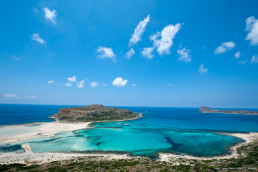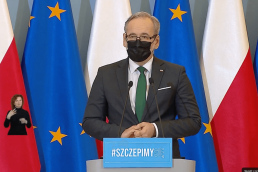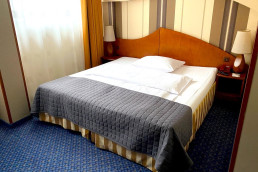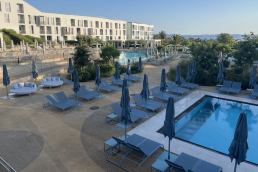Chamber of commerce: October in Polish hotels was dramatic
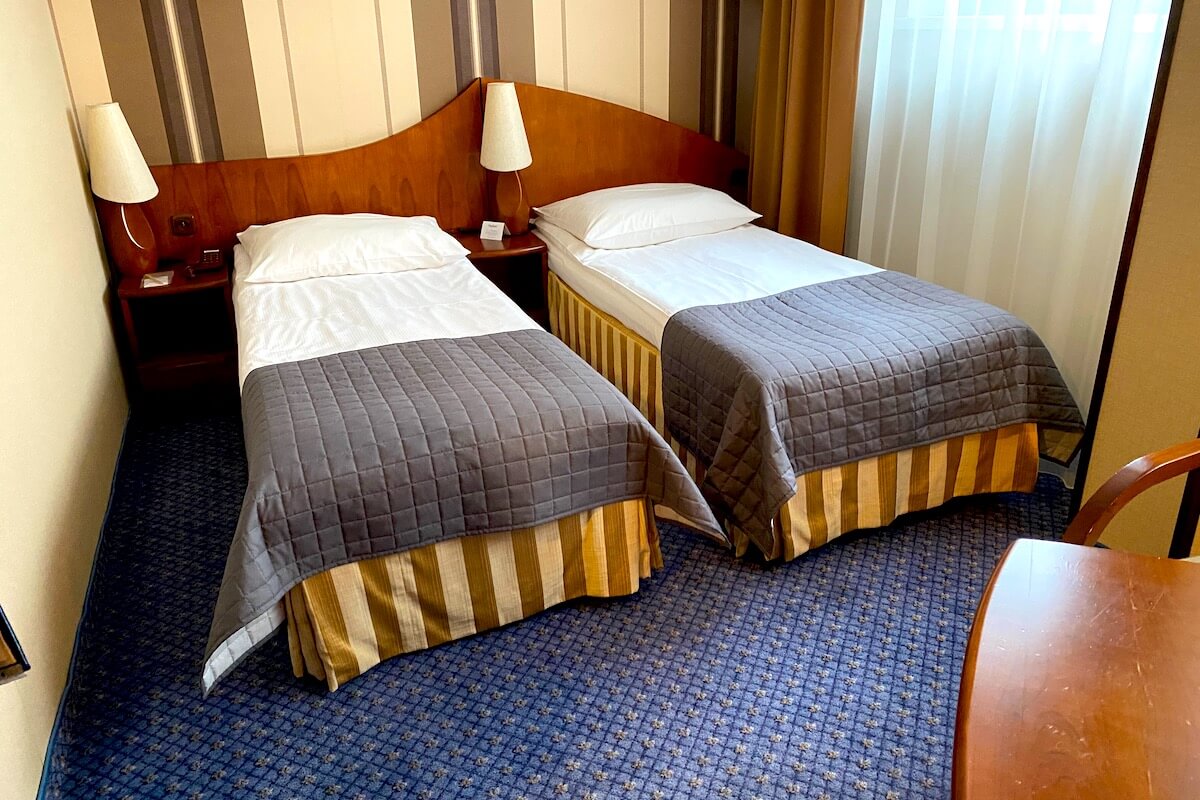
The latest survey by the Chamber of Commerce of the Polish Hotel Industry, conducted at the beginning of November among polish hoteliers shows, that in October leisure hotels recorded as low occupancy rates as facilities located in cities. The price reduction applied by as many as 3/4 of the hotels did not help. The Polish Tourism Voucher also does not give hope for additional demand in the coming months.
The latest IGHP (Chamber of Commerce of the Polish Hotel Industry) survey, which was conducted among hoteliers on November 2-6, shows that hotel occupancy rates clearly deteriorated in the second half of October. The average hotel occupancy varied, as in the previous two months, but was significantly lower. 43 percent of facilities recorded an average occupancy of less than 20 percent. Another group of 42 percent respondents declares a turnout in the range of 21-40 percent. Only 15 percent of hoteliers noted an attendance of over 40 percent.
The Tourist Voucher did not help in any way
The extended holiday season definitely came to an end in September and hotel accommodations recorded as low a score as city hotels. Thus, the prevailing opinions of hoteliers from the September survey, saying, that the Polish Tourist Voucher will not create additional demand for hotel services in the off-season periods, were confirmed.
The average price per night continues to decline. In October, more than 3/4 of the hotels recorded lower prices than in the previous year, while 52 percent lowered the price by more than 10 percent. Only 14 percent of hotels managed to keep average prices on the last year’s level.
No MICE guests and foreign visitors
The number of stays of foreign guests remains at a very low level. 85 percent of hotels estimated the share of the incoming market in the to be below 10 percent of all the reservations. Unfortunately, as in September, in the second business month after summer holidays, there are still no signs of an increase in demand from the so-called the meetings industry (MICE). As much as 89 percent hotels declared that its share in October revenues was no more than 10 percent.
As much as 80 percent of hotels say that the reservations for November do not exceed 10 percent of capacity. For December 83 percent of hotels say so, and for January – 92 percent. It should be noted that the decision to limit hotel operations only for business stays from November 7 was made public two days after the survey was sent to the chamber members. Thus, the situation might in fact be even worse.
More jobs lost
The employment situation also worsened. The survey data indicate that in October 28 percent of hotels (more than twice as many as in September) terminated employment contracts, and at the same time as much as 58 percent plans to make such decisions before the end of the year.
As much as 82 percent of the surveyed hotels have or declare that they will have difficulties in maintaining financial liquidity in the near future. 80 percent of hotels do not expect to have operating profit earlier than the end of 2021. 97 percent hotels forecast a return to the level of revenues from 2018-19 not earlier than 2022 and this year is associated with the highest expectations fot 48 percent of facilities.
Rescue activities
For the first time, an open-ended question was included in the survey. It concerned the proposal of actions to save the hotel in the face of a further difficult epidemic situation. All proposed measures can be divided into five main options: state aid, restructuring measures, marketing and pro-sales activities, change of business profile and resignation / suspension of activity.
The vast majority of hotels, i.e. 52%, indicated state aid as a preferred solution. The second most numerous option was cost restructuring (18 percent). 15 percent hotels indicated as a third option to resign / suspend operations. Marketing proposals and changes in the business profile were chosen as the last resort – 9 percent, respectively. and 7 percent.
IGHP conducted this online survey among hoteliers on November 2-6. A total number of 306 hotels located in all provinces participated in the survey. City hotels predominate (over 65 percent). 24 percent of the group were network objects. Most of the respondents (82 prercent) are hotels with up to 150 rooms, and the average size of the facility is 88 rooms. Hotels with a predominance of business traffic were 37 percent and a combination of business and tourism were 39 percent. Hotels specializing in leisure tourism accounted for 24 percent. The dominant forms of business among the surveyed facilities are micro, small and medium-sized enterprises (84 percent).
POWIĄZANE WPISY
10 października 2023
Sofitel Warsaw Victoria laureatem w konkursie World Travel Awards
W piątek 29 września w hotelu Sheraton Batumi w Gruzji, odbyła się gala wręczenia nagród…
0 Komentarzy1 Minuty
26 marca 2021
Roibos wants to be a leader of the revolution in the distribution of hotel content
Roibos spanish start-up will shake hotel distribution content market ? Easy going…
0 Komentarzy7 Minuty
5 marca 2021
Poland: hotels in Pomerania closed from March 13
During today's press conference, the Minister of Health, Andrzej Niedzielski announced…
0 Komentarzy1 Minuty
25 stycznia 2021
TBO Holidays to expand in Central Europe – hotel b2b content and self booking as game changer?
The Indian hotel B2B giant is entering the Polish market? Will it also offer the Paxes…
0 Komentarzy6 Minuty
21 stycznia 2021
RateHawk – the leader of hotel platforms, is preparing a lot of new products
RateHawk an expanding B2B hotel platform is expanding, adding new services. Exciting news…
1 Komentarz5 Minuty
4 listopada 2020
Polish hotels closed due to SARS-COV2 surge, but business guests are allowed
Polish prime minister Mateusz Morawiecki announced the latest restrictions. Distance…
0 Komentarzy1 Minuty
26 lipca 2024
Historyczny rok dla Portu Lotniczego Poznań-Ławica. 18,9 mln zł zysku i nowy prezes zarządu
Port Lotniczy Poznań-Ławica odnotował przełomowe wyniki finansowe za rok 2023, osiągając…
0 Komentarzy3 Minuty
26 lipca 2024
Wakacje w Falkensteiner Resort Punta Skala. Sport i relaks dla każdego
Najczystsza woda w przybrzeżnych kąpieliskach w Europie, słoneczna pogoda i bogata siatka…
0 Komentarzy4 Minuty




